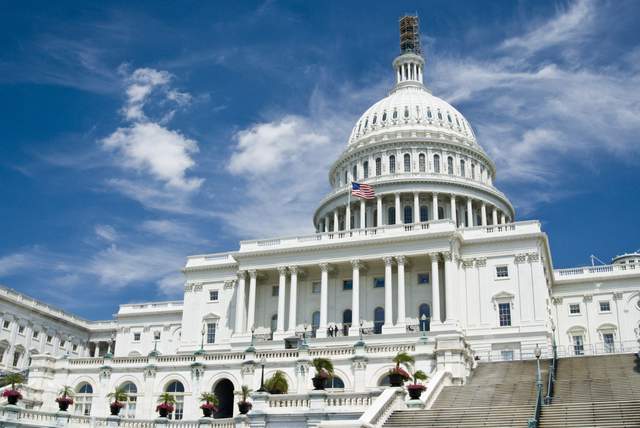Lessons learned for the next clean energy policy battle

The industry’s collective focus over the past few months has been advocating to preserve clean energy policies in a particularly adversarial political environment. During this time, I witnessed how the industry came together, put conflicts and competition aside, in order to work toward the shared goal of protecting clean energy tax credits. I was honored to be a part of this effort and commend everyone who stepped outside of their comfort zone to protect the energy transition.
While we did not get the result we wanted, we also don’t know how bad the outcome would have been without all of our effort and organizing. I know it is hard to see an upside right now, but the industry ground game that we developed will be key moving forward. That’s why my call to the industry is that we shouldn’t wait to be caught on our back foot for the next policy challenge. Instead, we need to already leverage the industry-wide organizing that we just created so we are not only ready for future headwinds, but creating new opportunities.
Entrenching clean energy
The Inflation Reduction Act (IRA) gave the energy transition one of its biggest boosts. Many of us in the industry relied on how the law was strategically designed for entrenchment, in which most of the benefits, such as investment dollars and manufacturing jobs, went mainly to red states and counties to prevent it from being overturned by a future Republican congress or administration. Leah Cardamore Stokes, author of Short Circuiting Policy: Interest Groups and the Battle Over Clean Energy and Climate Policy in the American States, was critical in designing the law for deep and fast entrenchment into our economy, politics, and culture. Her exceptional book, in which she researched and analyzed the oil and gas industry’s playbook for lobbying and policy enactment, acted as a gameplan for the IRA.
A great example of how entrenchment works is the Affordable Care Act, colloquially known as Obamacare. When Obama was pushing for his signature legislation, one of his sentiments about the bill was that once people are given health insurance, it is hard to take it away. And so far, even with all the attempts to dismantle the ACA, this concept of has proven true. And according to the theory of entrenchment, the longer a law exists and the more embedded it becomes into the very fabric of society, the harder it gets to take away – such as with social security.
On the other hand, the IRA, only had about two years to become entrenched. The benefits that the IRA was able to provide constituents in many GOP districts in that short period of time is likely why we saw some pushback on clean energy tax credit rollbacks from Republican representatives and senators. Likely, more aspects of the IRA survived because of this.
We can’t know for certain, but if the IRA had another few years to establish itself, it may have been too politically costly to dismantle. But either way, solely providing benefits is not enough to entrench a law, especially over a short period of time. Research and media coverage showed that while many typically-republican leaning communities benefited from new manufacturing plants, the beneficiaries, including the employees at those manufacturing plants, were unaware that the IRA was the reason. This is why achieving entrenchment also requires intense community engagement and national communication campaigns to not only tout the benefits, but to clearly connect the policy to its positive impacts.
Keep communicating solar energy benefits
While politicians can conduct this critical communication, the clean energy industry as a whole can also strategically organize and take the leading role in conveying the real-life benefits that these clean energy transition policies offer communities and families – from cost-effective energy to better paying jobs. One example of this is a company that launched a social media campaign that highlighted the good-paying, blue-collar solar-related manufacturing jobs that were created by the IRA.
Fossil fuel organizations, like the American Petroleum Institute, regularly communicate the industry’s benefits on a national level to the public because it is critical for continued entrenchment into U.S. culture and politics. As the clean energy industry expands its market share and matures, these types of community engagement and promotional campaigns that reach far outside our bubble to the standard energy consumer are increasingly important.
More so, it will support the efforts of colleagues on the governmental affairs and lobbying side to not only promote good policy, but ensure stronger entrenchment of that policy. Community engagement, public affairs, and marketing communications need to act as the infantry for the larger policy battles by helping to advance the front lines of where policy negotiations start. When the two work together and are synergistic, we see exponential impact.
For example, I worked closely with a Maine-based solar company, to attain media coverage of the impact that OBBA would have on Maine’s energy prices, economy, business stability, and jobs. While in parallel, the company’s governmental affairs focused on directly petitioning and meeting with Senator Collins. In the end, Collins was one of a few Republican senators who voted against the bill, specifically siting clean energy tax credit cuts as a reason.
Don’t wait for the next battle!
That’s why my call for the industry is to not wait for the next battle, but instead to prepare for it by systematically communicating the benefits that the energy transition is providing the country, communities, businesses, and families.
During this past battle we developed a mature and strong ground game, and we need to do more than just maintain it; we need to leverage it to prepare for the next challenges and opportunities. Every day for the next year and a half, as an industry, we need to be reminding the entire country why their energy bills are high and getting higher. We need to position our advanced energy technology as the best solution. This is not the time to surrender or concede. This is the time to stay mobilized and battle ready.
Jessica Fishman is a strategic marketing leader with nearly 20 years’ experience, including seven years as head of global public and media relations at inverter maker SolarEdge. Passionate about addressing climate change by accelerating the clean energy transition, she has worked at leading renewables companies, building marketing and communications departments.




